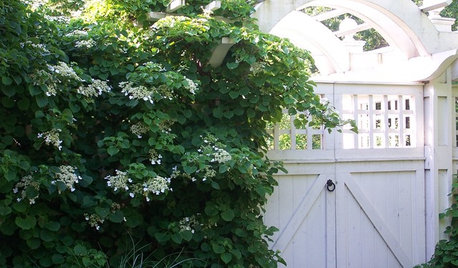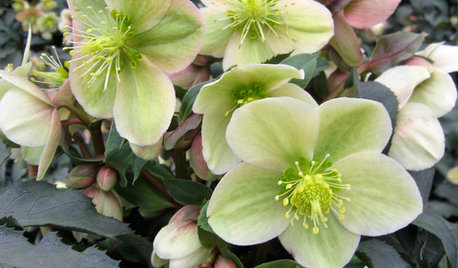Best Hybrids resistant to Blight
bobkatt
16 years ago
Related Stories

GARDENING GUIDES10 Deer-Resistant Native Flowers to Plant This Fall
Learn about natives that embrace some kinds of wildlife but resist grazing deer
Full Story
GARDENING GUIDES8 Deer-Resistant Elegant Evergreen Shrubs to Plant This Fall
Who knew that such beautiful shrubs could be deer-resistant?
Full Story
GARDENING GUIDESTop 12 Summer-Blooming Perennials for Deer-Resistant Drama
Can you have garden color, fragrance and exciting foliage with hungry deer afoot? These beauties say yes
Full Story
GARDENING GUIDESGreat Garden Combo: 3 Wonderful Plants for a Deer-Resistant Screen
Protect your privacy and keep deer at bay with a planting trio that turns a problem garden area into a highlight
Full Story
FALL GARDENING6 Deer-Resistant Flowering Vines to Plant This Fall
Have a major deer problem? Here are some of the only vines that have a chance of not being eaten
Full Story
FALL GARDENING9 Deer-Resistant Flowering Shrubs to Plant This Fall
These exquisite shrubs will attract your attention but won’t tempt the deer that roam your neighborhood at night
Full Story
LANDSCAPE DESIGNBoxwood Alternatives Bring the Chelsea Flower Show to You
Don’t let box blight limit your plans to borrow garden design ideas from the renowned British event
Full Story
WINTER GARDENINGGreat Design Plant: Gold Collection Hellebores Perform Like Stars
Exciting colors, longer bloom times, forward-facing flowers ... These hybrids leave old hellebores in the dust
Full Story
GARDENING GUIDES6 New Plant Varieties That Beat Out Their Parents
With better resistance and fewer demands, these garden beauties are worth a spot on your wish list
Full Story
GARDENING GUIDESGreat Design Plant: Rosa Banksiae a Low-Maintenance Beauty
This thornless, disease- and insect-resistant rose brings showers of white or yellow flowers to the spring garden
Full StoryMore Discussions


tomatomike
carolyn137
Related Professionals
Barrington Hills Landscape Architects & Landscape Designers · Belmont Landscape Architects & Landscape Designers · Waterbury Landscape Contractors · Boca Raton Landscape Contractors · Davidson Landscape Contractors · Mission Viejo Landscape Contractors · North Potomac Landscape Contractors · Shoreview Landscape Contractors · Eagan General Contractors · Dardenne Prairie General Contractors · Franklin General Contractors · Mililani Town General Contractors · Spanaway General Contractors · Valley Station General Contractors · Wheaton Decks, Patios & Outdoor Enclosurestimmy1
billtex
John A
bobkattOriginal Author
reginald_317
mule
timmy1
carolyn137
doof
carolyn137
bakersville
carolyn137
bakersville
drtluvr_in_z6
mule
carolyn137
mule
timmy1
carolyn137
tomatogreenthumb
tomatovator
ronnywil
timmy1
gobig_or_gohome_toms
carolyn137
farkee
doof
dancinglemons
carolyn137
farkee
carolyn137
tomatovator
farkee
carolyn137
farkee
pyrorob
HoosierCheroKee
carolyn137
HoosierCheroKee
lightt
reginald_317
marys1000
pezietz
carolyn137
bill449
timmy1
carolyn137
timmy1